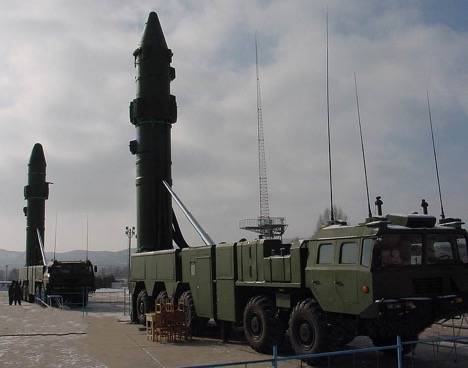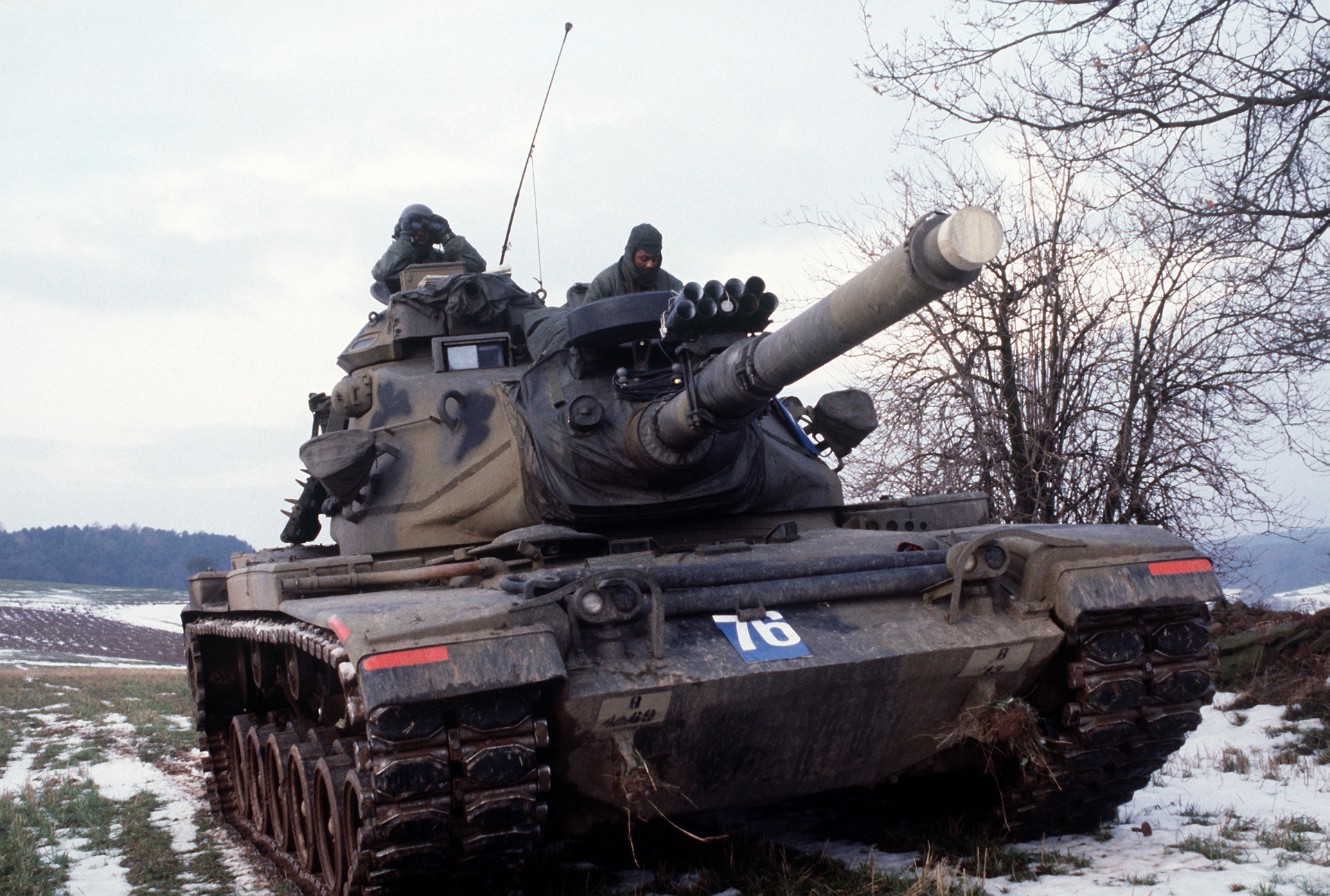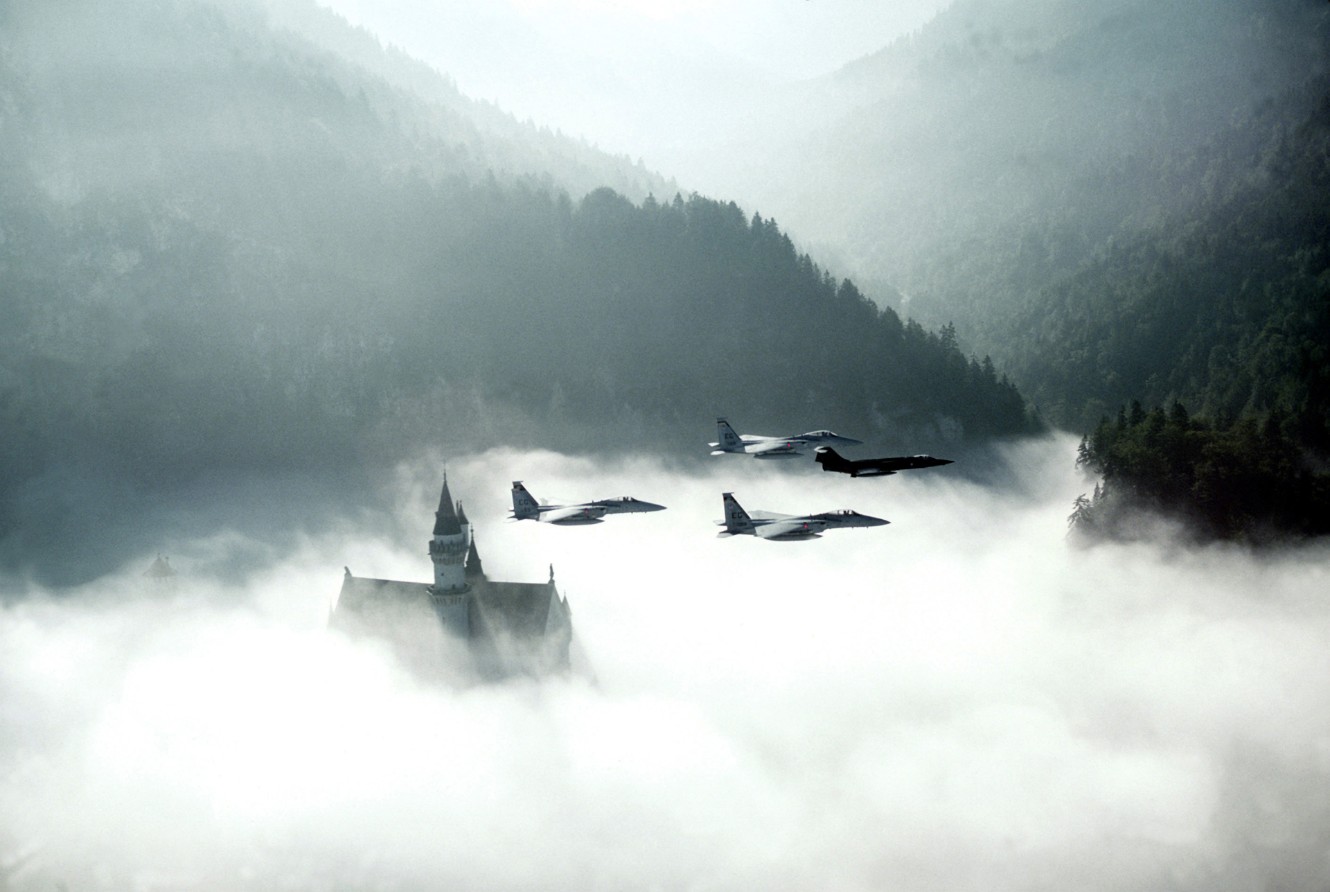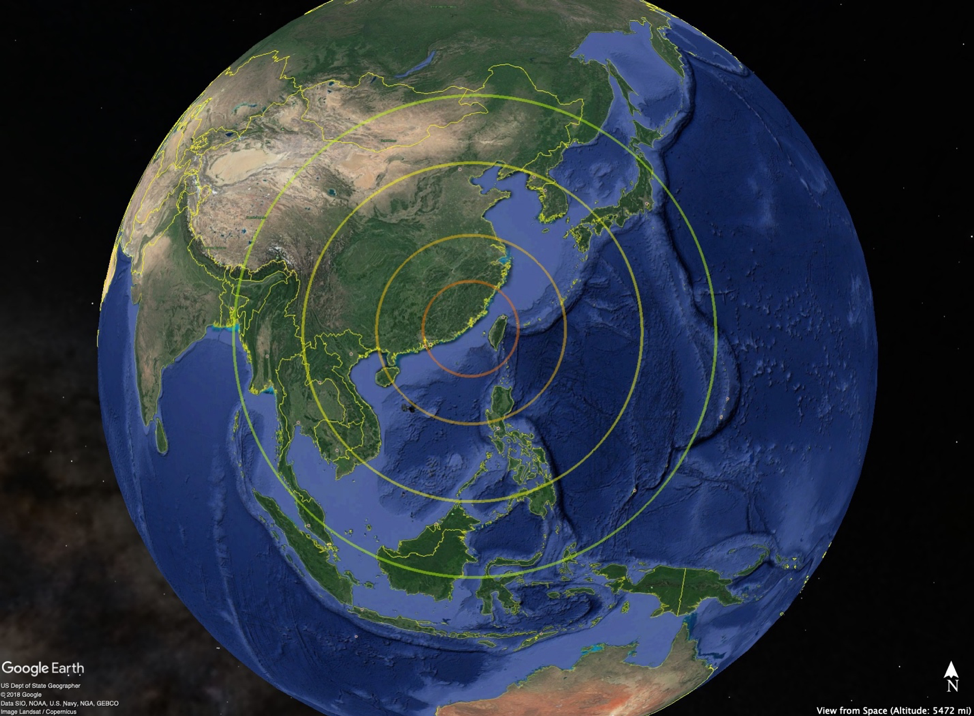Shapes, Part II: The Shape of Strategy

This is the second in a two-part series, called “Shapes,” which examines the assumptions behind how the Air Force designs its combat aviation at the enterprise level, rather than at the aircraft level. Culturally, airpower advocates are often captured by the possibilities inherent in a specific piece of hardware, rather than the possibilities inherent in a range of airpower capabilities. In reality, what makes airpower useful is not limited to the shape of a specific aircraft – it includes the shape of the whole. What does airpower need to accomplish, in what portion of the world, and against what adversaries? Part I was titled “The Shape of Airpower.”
This is the explicit message of the 2018 National Defense Strategy (NDS). The strategy concludes the United States is emerging from a period of strategic atrophy, meaning, in part, that the Joint Force’s post—Cold War dominant overmatch against regional powers suppressed any considered thought about how that overmatch might be eroding as a result of the steadily growing capabilities of resurgent and rising great powers. Therefore, the NDS declares that DoD must make “difficult choices and prioritize” resources in order to avert the decline of deterrence in the United States’ long-term strategic competitions with China and Russia that are “the principal priorities for the Department”.
–Beating the Americans at Their Own Game, CNAS, 2019
No military strategy occurs in a vacuum, and no strategist can afford to rely on an assumption that conditions will remain static. Indeed, the Defense Department has been resting on its post-Gulf War laurels for entirely too long, suffering from an undiagnosed (but severe) case of victory disease. The symptoms are clear — an unwavering commitment to stealth, an inability to recognize failure in Afghanistan, or an unreasonable faith in technology as the key to victory — just to name a few. It’s almost as if Americans believe that they have a right to victory on the battlefield as long as they spend enough money on fancy hardware. Not only is that untrue, but it’s dangerously myopic — adversaries can and do change strategies and adapt to changing conditions, regardless of whether we care to recognize that. A defense strategy has to remain flexible, because threats to that strategy certainly do.
Recently, the Center for a New American Security released a report on the Chinese offset strategy. The article laid out a convincing and well-supported case that China has been engaged in a long-term effort to develop counters to the American warfighting capabilities first exhibited in the Gulf War. But while the paper makes a solid analysis of the problem, its solution is somewhat limited: the “Department of Defense … must develop the operational concepts, systems, and platforms to allow the Joint Force to prevail against concerted Chinese attempts to deconstruct and destroy U.S. operational battle networks.” In short, the report’s recommendations are more of the same “strategic atrophy” that the authors themselves reference. More technology, more money, and more concepts, with nary a thought given to a warfighting strategy (versus an acquisition strategy), training, or personnel. If the United States wants to develop a viable offset strategy, then it would be better to reduce the dependence on ephemeral weapons advantages and center a strategy on attributes that are difficult or impossible to change: geography, cultural attributes, and strategic realities.
The Offset Dynamic
It has become fashionable in the past decade to refer to the development of an “offset” strategy. This is focused on the technological advantages sought by the United States to offset an asymmetric advantage held by a potential adversary. In the Cold War, the so-called “First Offset” pitted Soviet mass against NATO nuclear weapons. The “Second Offset” was allegedly conducted to counter the numerical superiority and technical parity, particularly in armored formations, mustered by the Warsaw Pact against NATO. This kind of asymmetric counter happens all of the time. It is a fundamental premise of warfare that a successful warfighting strategy is predicated on pitting strength against weakness. (Pitting strength against strength leads to catastrophes like the Battle of the Somme. That’s exactly what the advocates of a salvo competition are pushing). But viewing competing strengths as solely the purview of technological advantage is a mistake — and historically incorrect.
Against Nazi Germany, the United States was arguably the technologically inferior power. Germany maintained clear technological advantages in the design of submarines and armored vehicles, artillery, long-range weaponry such as the V-1 and V-2, jet aircraft, and small arms. But those advantages were overwhelmed by American advantages in industrial production (helped by abundant raw materials), manpower, logistics, and, in some cases (like parachute infantry), intense training. Against Japan, America possessed a degree of technological superiority throughout the war, with few notable exceptions (such as torpedoes and capabilities to conduct naval warfare at night. Nevertheless, the Pacific war was not a technological fight — it was a logistical one. Navy submarines and airpower (land- and carrier-based) strangled Japan even before the B-29s appeared overhead to ravage the Home Islands. The same advantages that America held against Germany were also decisive against Japan.
The trend continued. The Korean conflict pitted modern U.N. forces against Chinese mass armies, and the peninsula remains mired in an armed stalemate more than 60 years after the armistice. North Vietnam was entirely dependent on the Soviet Union for very limited advanced technology, losing tactical engagements consistently against U.S. forces — and yet still achieved unification with South Vietnam on favorable terms. The technological imbalance in Operation Desert Storm is often touted as proof that an “offset strategy” designed against the Soviets worked against a Soviet client, but the reality is more mundane. Iraq’s forces were outnumbered, geographically surrounded, poorly trained, even more poorly led, and completely unprepared for a modern conflict. The technological imbalance in Afghanistan is staggering — and the United States has not settled the longest war in its history.
Returning to the fancifully named “second offset,” the technologies developed to stem the Soviet hordes followed the doctrine that envisioned their use. The Army’s Training and Doctrine Command (TRADOC) began a shift from a focus on Vietnam to a focus on Europe in 1973. This coincided with the end of the active U.S. combat role in Vietnam, but also with the Yom Kippur War, where Egyptian and Syrian forces showcased new, Soviet-provided capabilities on the battlefield — to the detriment of the Israeli Defense Force. Rather than being technology-led, TRADOC’s “active defense” doctrinal revisions predated both the 1976 Defense Science Board study on deep-strike systems and the 1978 DARPA efforts to develop deep-strike technologies. In fact, the post-Vietnam revision of the Army’s operations manual, FM 100-5, was released in July of 1976.The revision was specific to the conditions and adversary that prevailed at the time:
It confronted directly the prime strategic problem the Army faced: a U.S. force quantitatively inferior in men and equipment on an armor-dominated European battlefield. Such influences discouraged the hypothetical, and a reading of the 1976 FM 100-5 reveals its writers’ deliberate intent to depict a corpus of tactics bound by the concrete. Tactics were tied firmly to the capabilities of weapons employed on the well-studied terrain of most likely deployment, all in the context of actual strategic circumstances believed likely to continue for the foreseeable future.
A year later, TRADOC changed its planning horizon to take into account the new weapons then under design, looking ten years into the future with a “Battlefield Development Plan”. AirLand battle took advantage of expected technological developments that followed the active defense doctrine, and further doctrinal revisions were underway long before any of the “1980s systems” were fielded. The Operational Concept for AirLand Battle was released in 1981 — a year before the first limited demonstration of Assault Breaker referenced in the CNAS paper.
It’s a mistake to view all military technology fielded in the 1980s as a result of a second offset strategy, or even as a result of the new Army operations manual. The “stealth” technology that F-117s used so effectively in Desert Storm wasn’t envisioned by the designers of AirLand battle, but it did fit in well. The Assault Breaker technologies were another tech arrow in the quiver (of many), but AirLand battle occurred in the context of even more revolutionary developments in force development and training. The United States had created the first all-volunteer force in its history, and all of the services invested in more realistic training, backed by a robust exercise program, focused on the Soviet threat.

Figure 1: The commander of an M60A3 main battle tank of 4th Battalion, 69th Armor, part of the 1st Brigade, 8th Infantry Division, searches for opposing force positions on December 23, 1985, during Central Guardian, a phase of Exercise Reforger ’85 near Giessen, Germany. (U.S. Air Force photo)
Ask any M-1 tank commander in Europe (or even an M60A3 tank commander) in 1985 what his targeting priorities were and you would get the same answer — he was going to target the Warsaw Pact tanks with the extra antennas — the telltale signature of the command tank. Army artillery was likewise going to target command posts, while the links between ground control elements and airborne aircraft would also come under attack. The point of this was to capitalize on a cultural initiative imbalance — NATO expected combat leadership from junior officers and noncommissioned officers while the Warsaw Pact discouraged it. To go one step further, both the Air Force and the Navy had invested in airborne command and control aircraft to ensure that their forces were better directed as well as better trained. Annual Reforger (“Return of FORces to GERmany”) exercises put the icing on the cake: NATO combat forces were prepared to fight a specific adversary with well-understood weaknesses on known terrain in conjunction with habitual allies.
If there was a second offset, the technology part played a supporting role, not a leading one. The correlation of forces matched a numerically inferior NATO force that was well-equipped, well-trained, individually flexible and professional against a numerically superior conscript army that was also well-equipped, but not realistically trained nor tactically flexible. And if all else failed, neither the United States nor NATO ever adopted a “no first use” policy, ensuring that tactical nuclear weapons remained an option to counter a conventional assault. Those weapons were also modernized and fielded, including the Ground-Launched Cruise Missile and the Pershing II ballistic missile. Arguably, a NATO offset strategy focused on cultural advantages rather than technological ones — and on general adversary weaknesses rather than hardware deficiencies.

Figure 2: Four NATO fighters participating in Reforger ’82 fly over cloud-shrouded Neuschwanstein Castle in September 1982. The flight of three U.S. Air Force F-15C Eagles from the 33rd Tactical Fighter Wing, based at Eglin Air Force Base, Florida, is led by a Luftwaffe F-104G Starfighter. (U.S. Air Force photo by MSgt. Richard M. Diaz)
C’est magnifique, mais ce n’est pas la guerre: c’est de la folie
Half a league, half a league,
Half a league onward,
All in the valley of Death
Rode the six hundred.
“Forward, the Light Brigade!
Charge for the guns!” he said.
Into the valley of Death
Rode the six hundred.
-“Charge of the Light Brigade,” Alfred, Lord Tennyson
The fact that China has invested a great deal of time and money into countering a presumed U.S. strategy based on a direct attack upon the Chinese mainland is a bonus — because it’s the wrong strategy for the United States to execute. Any strategy focused on the Indo-Pacific theater is naturally an air and maritime strategy, and the United States has been overly focused on a high-tech, strategic attack strategy that has never been proven to work. It’s completely unrealistic to assume that the U.S. military can capitalize on an arsenal of short-range fighters based on four bases in Japan and Korea, plus a greatly diminished navy, to fight China in its own front yard. China has long since developed the mass and precision-missile capability to transform America’s four Asian foreign-soil airbases into smoking rubble, regardless of any defenses employed. Even if these bases were left unmolested, a country that survived the Cultural Revolution will not capitulate to the limited number of sorties that four fighter wings can generate.
The airfield density around China is simply not high enough to support a massive American air campaign, and the seas near China are increasingly lethal. In the same way that the Soviet Navy would not have been able to operate between Cuba and Florida in 1986, the United States is unlikely to be able to operate in the Chinese front yard in 2020. That’s fine. The United States does not have to close to knife-fight range to generate a successful warfighting strategy against China. The Chinese “keep out zone” that extends to 1,500 nautical miles or so is nothing more than the fence around the tiger exhibit at the zoo — keeping people out of a place they don’t want to go anyway. If the Chinese strategy is oriented around limiting U.S. strike capabilities up to a distance of 1,500 nautical miles from Chinese shores, then they are doing the United States a favor — making it clear that the approach taken by the Charge of the Light Brigade may be magnificent, but it’s not war. The United States tried this approach in Vietnam during the Rolling Thunder campaigns, throwing men and machines into the mouth of the cat to execute a poorly thought-out strategy that ultimately did not work. America should beware any appetite for a repeat.
China’s interests lie well beyond the 1,500-nautical-mile line. They have to. China is heavily dependent on imported raw materials, including the energy needed to keep its military functioning. It is vulnerable in the same way that Imperial Japan was — land routes notwithstanding. But the argument that the United States can fight China outside “knife-fight range” is ultimately peripheral to an offset strategy. U.S. strategists need to rethink what they mean by “offset” and focus less on hardware and more on people and ideas.
Culture and Geography
Technology changes, sometimes rapidly. Militaries adapt, sometimes slowly and after a defeat, but they adapt nevertheless. Culture changes slowly and geography changes even slower than that. The American strengths remain the same as they were in World War II — a high degree of individualism and creativity head up a list of exploitable attributes. The U.S. education system and freewheeling form of government encourage a degree of nonconformity (sometimes not to its benefit) and Americans practically idolize initiative and entrepreneurial spirit. Those are the characteristics that the United States ought to be leaning on for an offset strategy. Matched with realistic training those are the very characteristics that crushed opposing regular forces in World War II, Korea, Vietnam and the Persian Gulf.The United States can rely on individual leadership in a way that neither the Chinese nor the Russians can, because their military training is designed to develop technical specialists and not battlefield leaders. It can capitalize on a societal offset that is unlikely to be matched by a society that relies on the top-down, centrally directed, authoritarian dictatorship typical of Russia and China.
The other offsetting attribute that is exploitable is geography. The United States has two land borders shared with friendly states, one of which is also a NATO ally. The US is protected by two oceans and a lot of distance. China is surrounded by difficult land borders (take your pick — desert, mountains, or jungle), and many of its neighbors have longstanding grievances. It’s no exaggeration to state that U.S. neighbors find the United States exasperating — China’s neighbors find it domineering and adversarial. To make the geographical disadvantage more acute, China is further contained by two island chains, also occupied by potential adversaries. North American geography grants wide-open waters in the approaches to the country, while East Asia has an overabundance of barriers and chokepoints. Those chokepoints are not going away — and can be exploited as part of an offset strategy.

Figure 3: 270, 540, 1,000 and 1,500 nautical mile circles from the eastern Chinese coast. Unless the United States is defending treaty partners, why fight here? China has to. The United States does not.
Agincourt, not Balaclava
Then call we this the field of Agincourt,
Fought on the day of Crispin Crispianus.
-Henry V, Act 4, Scene VII
At the risk of using a tactical analogy to describe a strategic imperative, Agincourt is nevertheless instructive. On October 25, 1415, an English army consisting of around 1,500 men at arms and 7,000 Welsh longbowmen faced a French army that outnumbered them somewhere from two to four to one, with a lower proportion of archers or crossbowmen. French heavy cavalry, the flower of French chivalry, charged the English line across a muddy field, into a storm of arrows delivered by the Welsh longbow. The French were devastated, suffering one of the most lopsided defeats in medieval history. This was more than just a case of mismatched forces — the Welsh longbowmen were a societal asset unmatched by any other European country. By 1415, the Welsh had already been using the longbow for around 800 years (including against the English) and mandatory longbow practice had been instituted 150 years before Agincourt (and would remain in law until Queen Victoria’s reign).
The battle was not a foregone conclusion determined by superior long-range weaponry. Far from it. It was a very chancy affair made less chancy by effective use of terrain to prevent the French from flanking the English force and channeling their attack into the teeth of the English defenses. Not only were the longbowmen a uniquely British asset, but they had been decisive at Crecy, Longkirk, and Poitiers. In effect, Henry V was the beneficiary of a societal offset strategy that no adversary could duplicate because it wasn’t the longbow that made the difference — it was the archers. The English kings had a unique capability that was decisive because they had the people, the strategy and the leadership to use it effectively — and their adversaries did not.
Geography Trumps Technology
Any offset strategy against China should take advantage of three fundamental asymmetries: The United States has a structural advantage in the way it trains its military, a cultural advantage in its approach to problems, and a geographical advantage in that it doesn’t have to go close to China to project power. The United States does need to go close to China to defend treaty partners, but in those cases it has the home-field advantage, which shifts precisely because of those partners. In general, Chinese forces need to come out much more than U.S. forces need to go in. It’s easy to point to technological asymmetries, but those asymmetries are generally short-lived. In order to develop a successful offset strategy, the U.S. military needs to deliberately avoid pitting its strengths against theirs, and look to pitting its strengths against their weaknesses. There are viable offset strategies and the United States should pursue them, but those offset strategies should not be overly focused on technology, or they will fail. America would be far better served by focusing on the “strategy” in “offset strategy,” and not placing faith in technological races.
Col. Mike “Starbaby” Pietrucha was an instructor electronic warfare officer in the F-4G Wild Weasel and the F-15E Strike Eagle, amassing 156 combat missions over 10 combat deployments. He is the last American aviator to reach 1000 hours operationally in the mighty Phantom II. As an irregular warfare operations officer, Pietrucha has two additional combat deployments in the company of US Army infantry, combat engineer, and military police units in Iraq and Afghanistan. He is currently assigned to Air Combat Command. The views expressed are those of the author and do not necessarily reflect the official policy or position of the Department of the Air Force or the U.S. government.

